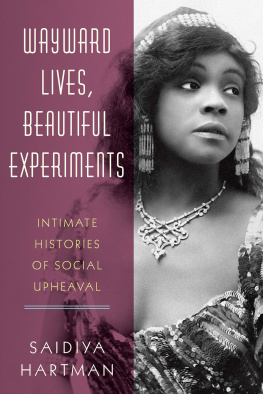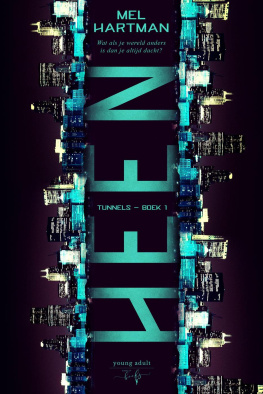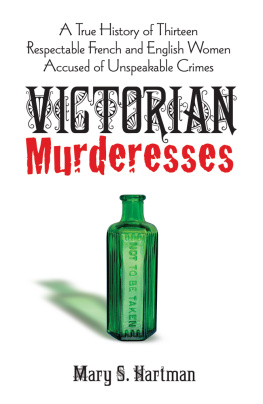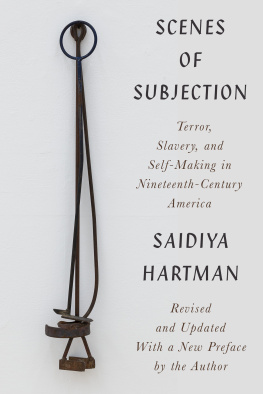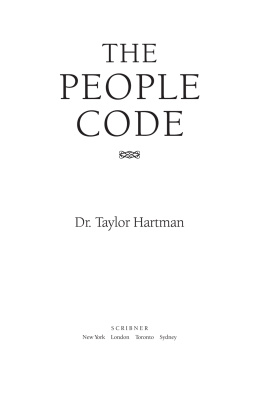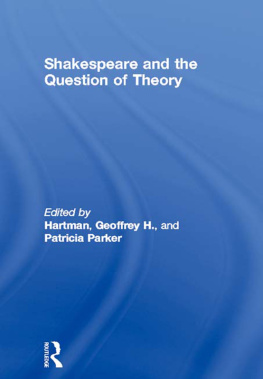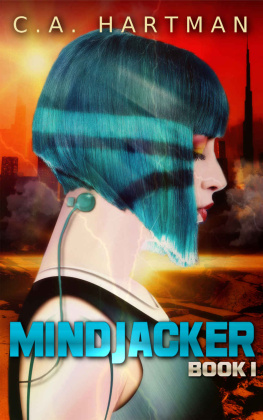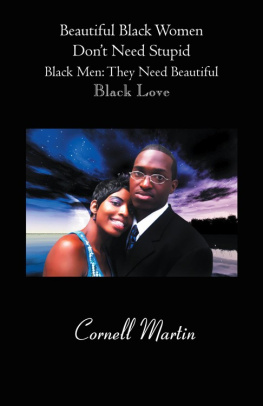Contents

ALSO BY SAIDIYA HARTMAN
Lose Your Mother
Scenes of Subjection
WAYWARD LIVES,
BEAUTIFUL
EXPERIMENTS

Intimate Histories of Social Upheaval

SAIDIYA HARTMAN

W. W. NORTON & COMPANY
Independent Publishers Since 1923
New York | London
Copyright 2019 by Saidiya Hartman
All rights reserved
First Edition
Photo of two women hugging on p. 296 used by permission of the Charlotte Sheedy
Literary Agency, Inc., on behalf of the Pauli Murray Foundation
For information about permission to reproduce selections from this book, write to
Permissions, W. W. Norton & Company, Inc., 500 Fifth Avenue, New York, NY 10110
For information about special discounts for bulk purchases, please contact
W. W. Norton Special Sales at specialsales@wwnorton.com or 800-233-4830
Book design by Chris Welch
Production manager: Lauren Abbate
The Library of Congress has cataloged the printed edition as follows
ISBN 978-0-393-28567-3
ISBN 978-0-393-28568-0 (ebk.)
W. W. Norton & Company, Inc., 500 Fifth Avenue, New York, N.Y. 10110
www.wwnorton.com
W. W. Norton & Company Ltd., 15 Carlisle Street, London W1D 3BS
FOR BERYLE AND VIRGILIO HARTMAN ,
WHO I MISS EVERY DAY .
FOR HAZEL CARBY,
WHO OPENED THE DOOR .
She was, she knew, in a queer indefinite way, a disturbing factor.
NELLA LARSEN Quicksand
CONTENTS
Book One
SHE MAKES AN ERRANT PATH THROUGH THE CITY
Book Two
THE SEXUAL GEOGRAPHY OF THE BLACK BELT
Book Three
BEAUTIFUL EXPERIMENTS
At the turn of the twentieth century, young black women were in open rebellion. They struggled to create autonomous and beautiful lives, to escape the new forms of servitude awaiting them, and to live as if they were free. This book recreates the radical imagination and wayward practices of these young women by describing the world through their eyes. It is a narrative written from nowhere, from the nowhere of the ghetto and the nowhere of utopia.
Every historian of the multitude, the dispossessed, the subaltern, and the enslaved is forced to grapple with the power and authority of the archive and the limits it sets on what can be known, whose perspective matters, and who is endowed with the gravity and authority of historical actor. In writing this account of the wayward, I have made use of a vast range of archival materials to represent the everyday experience and restless character of life in the city. I recreate the voices and use the words of these young women when possible and inhabit the intimate dimensions of their lives. The aim is to convey the sensory experience of the city and to capture the rich landscape of black social life. To this end, I employ a mode of close narration, a style which places the voice of narrator and character in inseparable relation, so that the vision, language, and rhythms of the wayward shape and arrange the text. The italicized phrases and lines are utterances from the chorus. This story is told from inside the circle.
All the characters and events found in this book are real; none are invented. What I know about the lives of these young women has been culled from the journals of rent collectors; surveys and monographs of sociologists; trial transcripts; slum photographs; reports of vice investigators, social workers, and parole officers; interviews with psychiatrists and psychologists; and prison case files, all of which represent them as a problem. (Some of the names have been changed to protect confidentiality and as required by the use of state archives.) I have crafted a counter-narrative liberated from the judgment and classification that subjected young black women to surveillance, arrest, punishment, and confinement, and offer an account that attends to beautiful experimentsto make living an artundertaken by those often described as promiscuous, reckless, wild, and wayward. The endeavor is to recover the insurgent ground of these lives; to exhume open rebellion from the case file, to untether waywardness, refusal, mutual aid, and free love from their identification as deviance, criminality, and pathology; to affirm free motherhood (reproductive choice), intimacy outside the institution of marriage, and queer and outlaw passions; and to illuminate the radical imagination and everyday anarchy of ordinary colored girls, which has not only been overlooked, but is nearly unimaginable.
Wayward Lives elaborates, augments, transposes, and breaks open archival documents so they might yield a richer picture of the social upheaval that transformed black social life in the twentieth century. The goal is to understand and experience the world as these young women did, to learn from what they know. I prefer to think of this book as the fugitive text of the wayward, and it is marked by the errantry that it describes. In this spirit, I have pressed at the limits of the case file and the document, speculated about what might have been, imagined the things whispered in dark bedrooms, and amplified moments of withholding, escape and possibility, moments when the vision and dreams of the wayward seemed possible.
Few, then or now, recognized young black women as sexual modernists, free lovers, radicals, and anarchists, or realized that the flapper was a pale imitation of the ghetto girl. They have been credited with nothing: they remain surplus women of no significance, girls deemed unfit for history and destined to be minor figures. This book is informed by a different set of values and recognizes the revolutionary ideals that animated ordinary lives. It explores the utopian longings and the promise of a future world that resided in waywardness and the refusal to be governed.
The album assembled here is an archive of the exorbitant, a dream book for existing otherwise. By attending to these lives, a very unexpected story of the twentieth century emerges, one that offers an intimate chronicle of black radicalism, an aesthetical and riotous history of colored girls and their experiments with freedoma revolution before Gatsby. For the most part, the history and the potentiality of their life-world has remained unthought because no one could conceive of young black women as social visionaries and innovators in the world in which these acts took place. The decades between 1890 and 1935 were decisive in determining the course of black futures. A revolution in a minor key unfolded in the city and young black women were the vehicle. This upheaval or transformation of black intimate life was the consequence of economic exclusion, material deprivation, racial enclosure, and social dispossession; yet it, too, was fueled by the vision of a future world and what might be.
The wild idea that animates this book is that young black women were radical thinkers who tirelessly imagined other ways to live and never failed to consider how the world might be otherwise.
| Girl #1 | Wanders through the streets of Philadelphias Seventh Ward and New Yorks Tenderloin, year 1900. She is young yet so old and raw. |
| Girl #2 | Trapped in an attic studio in Philadelphia, year 1882. |
| The Window Shoppers | Two young women stroll along South Street, late 1890s. |

